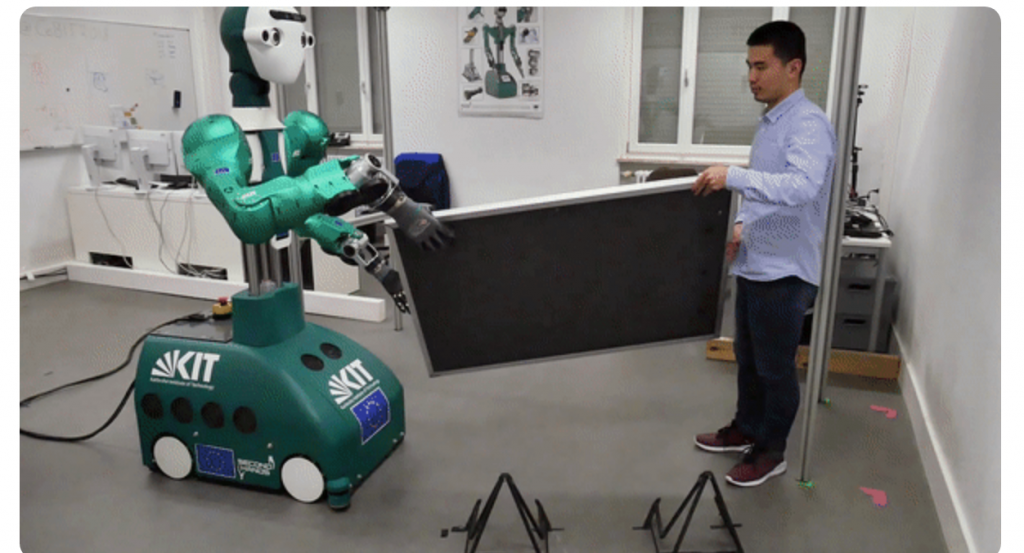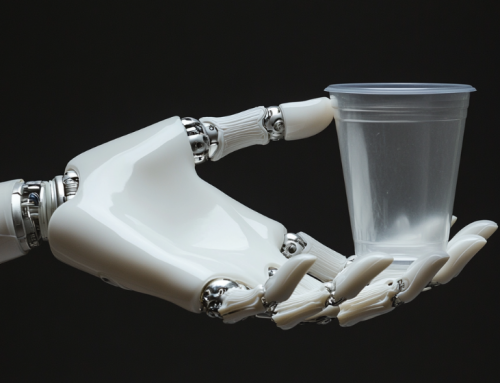
The ARMAR-6 acts as a work assistant or apprentice, doing physical tasks in tandem with a human worker. It can also respond to conversation.
New European Robot Shows How Four Hands Are Better Than Two
A five-year-long project by the European Union to develop a second pair of hands for workers in industrial environments has shown real results according to an article from venturebeat.com this week. The participants are touting breakthroughs in “AI learning, natural language processing, and robotic manipulation.”
The SecondHands project, born from the EU’s €80 billion ($87 billion) Horizon 2020 research program, set out in 2015 to develop an assistant to workers in factories, warehouses and other industrial locations. The robots are “proactive” in helping technicians lift or carry objects, performing less-skilled work.
Robots have long been a part of factory work, but this robot is different, because it intuitively responds to the needs of a worker, proactively assisting. It also can understand speech.
The culmination of the program was a robot called ARMAR-6, which was developed at KIT in Germany to advance research into human-robot interaction in a structured, supervised environment.
“ARMAR-6 sports a range of sensors and cameras, along with a telescopic torso and rotatable arms, hands, and fingers that can grasp. Crucially, it can interact with its environment using just visual data, detecting where humans are and estimating their posture purely from real-time images.”
The timing of the robots could help fill gaps in workplaces due to the COVID-19 pandemic, according to one of the designers.
In the future, the technologies that underpin ARMAR-6 could be redeployed in other environments, such as “helping to reduce contamination, or in assisted living,” according to Graham Deacon, robotics research fellow at Ocado Technology. “We’ll continue to build on these learnings, looking forward to a future when we can use these breakthroughs to apply them in a real-world setting.”
read more at venturebeat.com







Leave A Comment